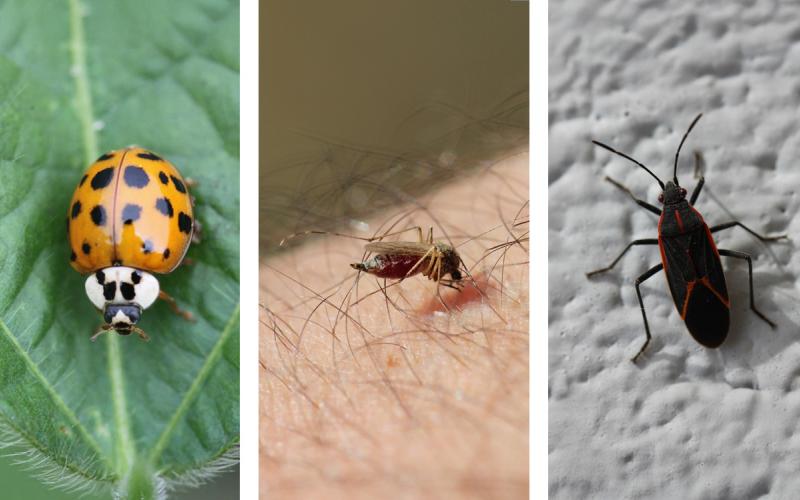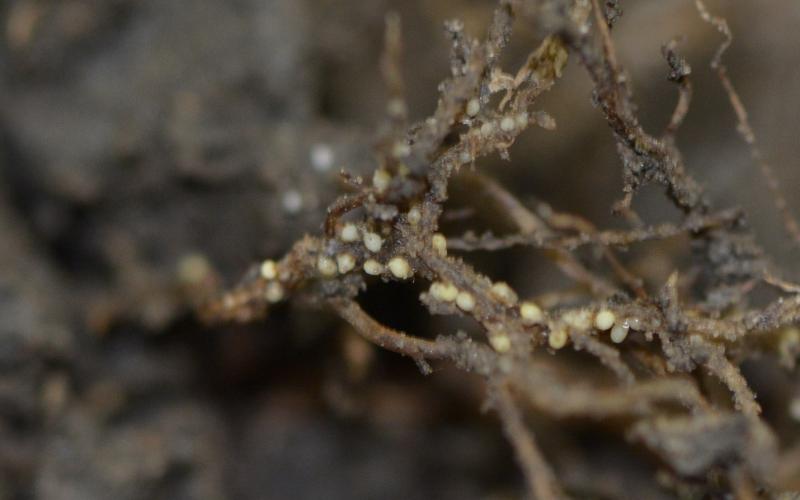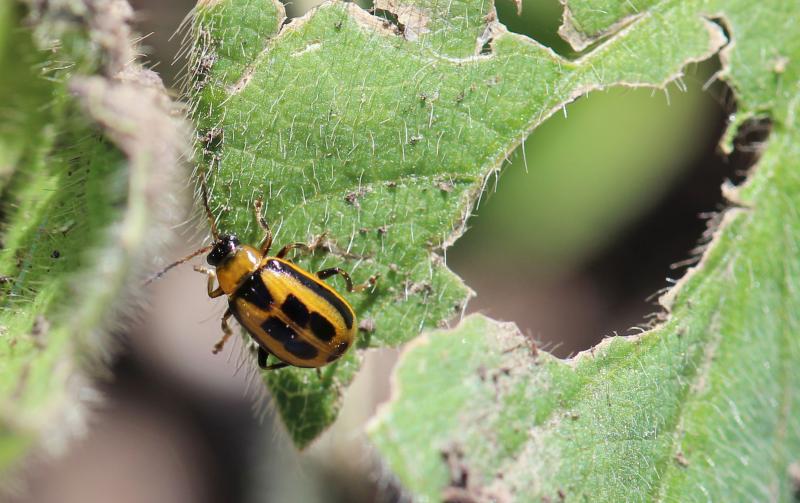
Some soybean in South Dakota has emerged and it is already being attacked by early-season bean leaf beetles. So far, observations of adult bean leaf beetles emerging from fields and defoliation of soybean have been in Southeastern South Dakota. Although a previous article estimated that bean leaf beetle survival in South Dakota was likely close to zero due to cold air temperatures, there is always the possibility that suitable cover prevented the high levels of mortality.
Scouting Strategies
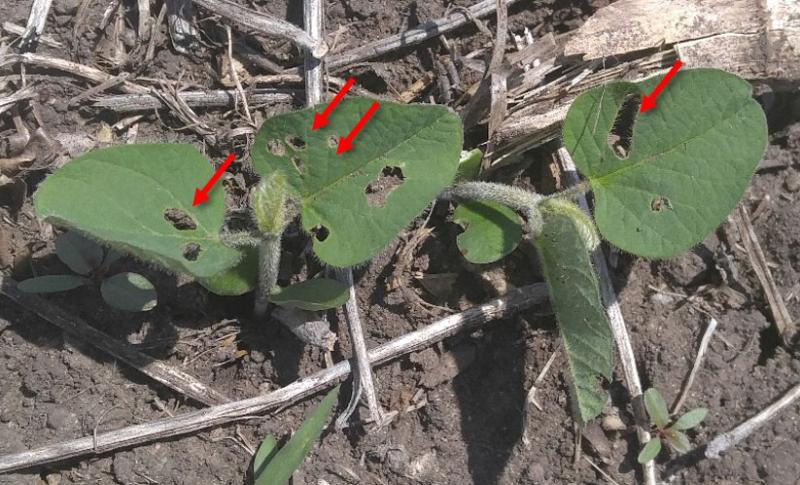
The question we are often asked is “What is the threshold for early season bean leaf feeding?” For bean leaf beetles, we recommend the defoliation threshold of 20% prior to flowering. However, this can be tricky to estimate when soybeans are just starting to emerge. An alternative method is to count the number of adult bean leaf beetles per plant.

Defoliation Threshold
To scout for early season bean leaf beetles, examine 20 plants in five different areas of the field.
If you are using the defoliation threshold, look for holes in the leaves as well as feeding on the stems or cotyledons (Figure 2).
Management is recommended when an average of 20% of the leaf tissue is removed from the scouted plants (Figure 3).
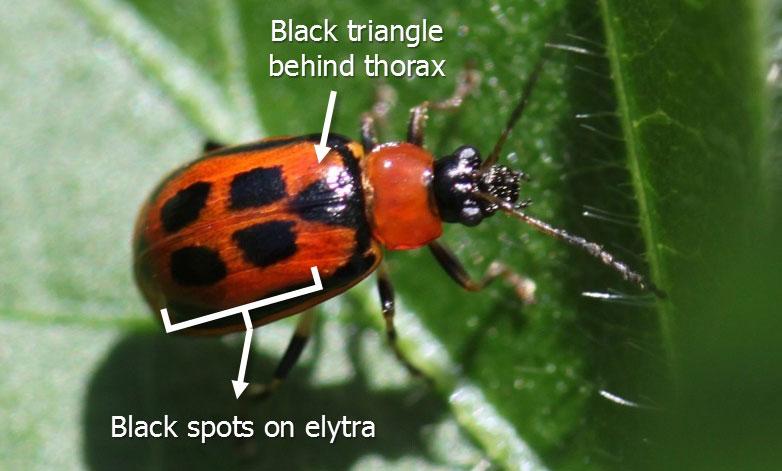
Visual Counts
If you are scouting by using visual counts of bean leaf beetle adults, look at 20 plants from five different areas throughout the field. When counting adults, it is important to avoid disturbing the plants as bean leaf beetles will often drop to the ground. Avoid casting a shadow on the plants that are being scouted, as that will also cause beetles to drop from the plants. The adult bean leaf beetles can vary in color from brown, orange, yellow, red and varying shades of those colors. Adults can be identified by the black triangle present behind their thorax (Figure 4). Adults will also have black heads and will generally have four spots on their hardened forewings (elytra). The thresholds for VC to V1 soybean are listed in Table 1.
| VC Stage |
|
|||
| Crop Value | $6 | $8 | $10 | $12 |
| $8 | 2 | 2 | 3 | 4 |
| $9 | 2 | 2 | 3 | 3 |
| $10 | 1 | 2 | 2 | 3 |
| $11 | 1 | 2 | 2 | 2 |
| V1 Stage |
|
|||
| Crop Value | $6 | $8 | $10 | $12 |
| $8 | 3 | 3 | 4 | 5 |
| $9 | 2 | 3 | 4 | 4 |
| $10 | 2 | 3 | 3 | 4 |
| $11 | 2 | 2 | 3 | 4 |
| *Adapted from University of Nebraska-Lincoln | ||||
Management
Products labeled for bean leaf beetle in South Dakota can be found in the 2019 South Dakota Pest Management Guide: Soybeans.

